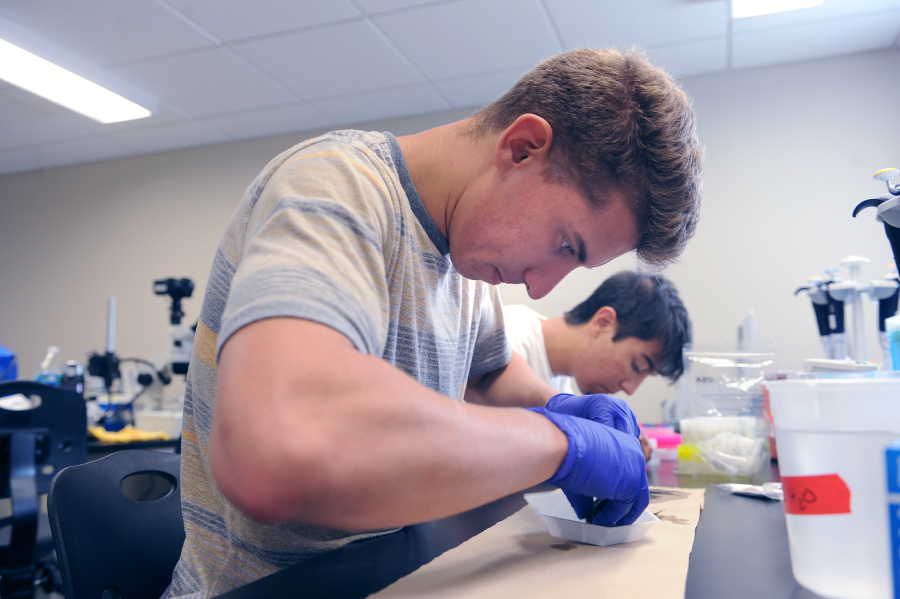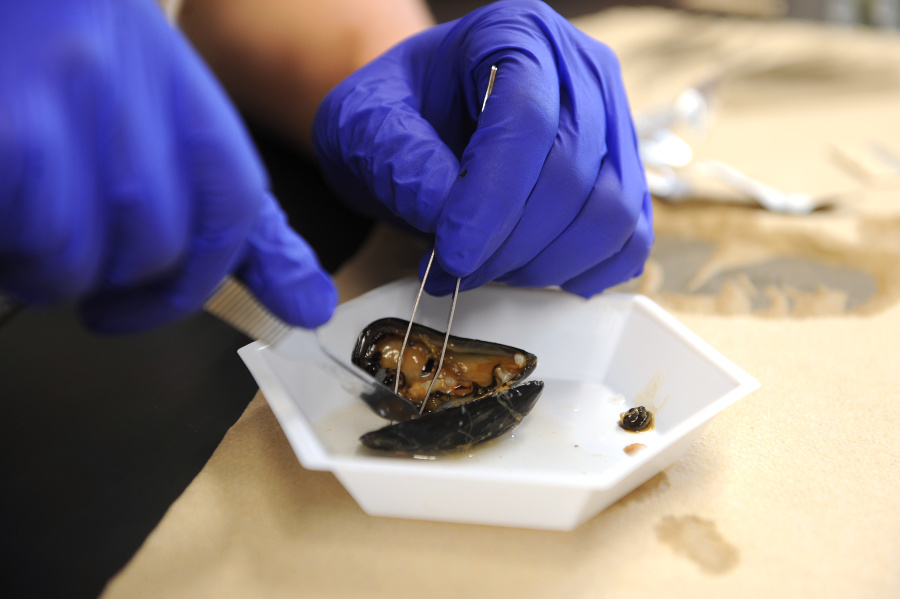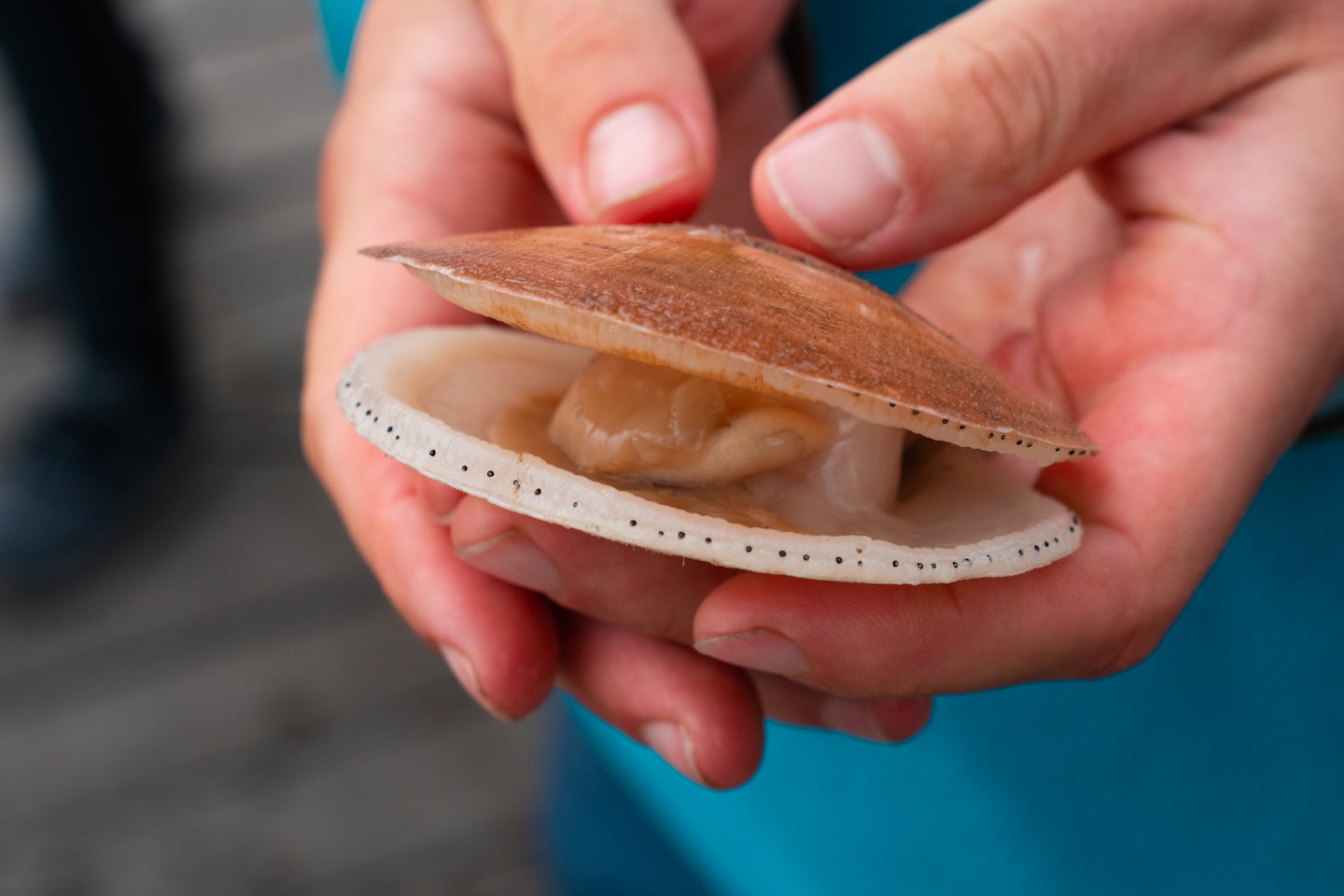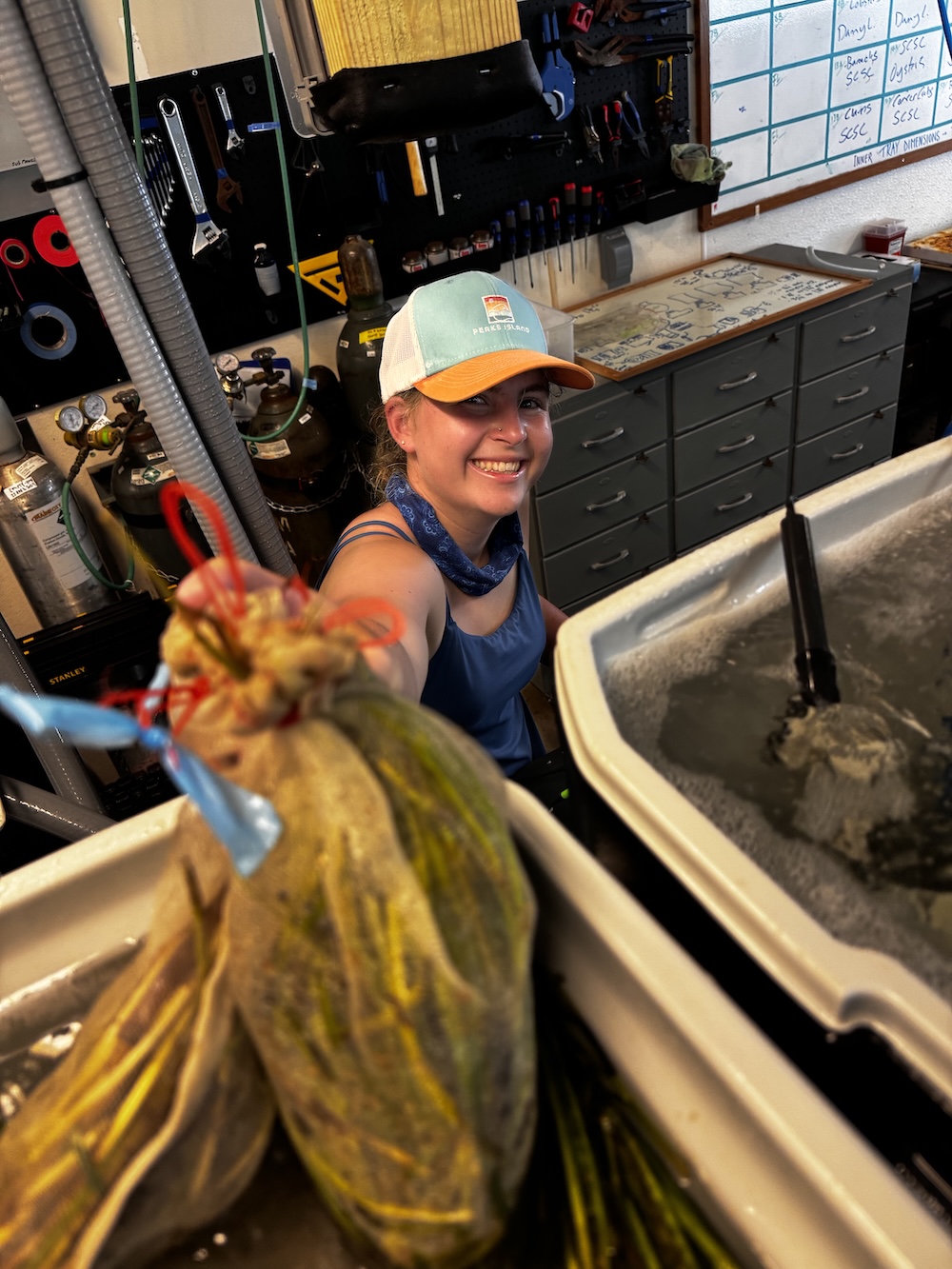Pieter Martino ’17 and Professors Publish Findings on Future of Blue Mussels
By Rebecca Goldfine
Martino's findings appear in the December edition of Journal of Shellfish Research. He coauthored the paper with David Carlon, who is the director of the Schiller Coastal Studies Center, and former Visiting Assistant Professor and Research Associate Sarah Kingston.
The three scientists are broadly interested in understanding the ecological, physiological, and molecular impact of climate change on critical fisheries. For this research project, they focused on blue mussels to reveal how the shellfish is responding—both physically and genetically—to warmer waters, less food, and waters made more acidic with dissolved carbon dioxide. "[Blue mussels] are quintessential to the Maine coastal habitat," Kingston said. But, with their calcium carbonate shells, they are also potentially vulnerable to ocean acidification.
Martino, who is currently a research associate at the Icahn School of Medicine at Mount Sinai and the Black Family Stem Cell Institute, said the questions the research addresses are "of both theoretical and practical importance."
"[The work] delves into...broad ecological theory, illuminates fine molecular mechanisms, and takes the first steps toward tackling a problem of great economic and environmental importance to the Gulf of Maine," he said. The ocean waters around the state are warming rapidly, with impacts projected to worsen over the next century.

Mussels and other shellfish use calcium carbonate from ocean water to build their shells. As oceans continue to absorb the large amounts of carbon dioxide humans are pumping into the atmosphere, shellfish could find it increasingly difficult to make thick protective exteriors. The surge of carbon dioxide in the ocean not only makes the seawater more acidic, it also has the effect of lowering the concentration of carbonate ions available to marine organisms to make shells.
Yet the Bowdoin research team suspected that some mussels could be more successful at withstanding stressful conditions. These sturdier mollusks, they reasoned, would have variations in their genes that give them a better chance at survival.
"We want to understand how genetic variation ends up impacting how well a single mussel can thrive as the Gulf of Maine changes," Kingston said. "That, in turn, can help us predict how populations of mussels may be susceptible to or resilient in these new ocean conditions."
The research stems from work Martino did over two summers and throughout his senior year for his biology honors project. He collected wild mussels from sites along the Gulf of Maine and Bay of Fundy, bringing the samples back to the Schiller Center's wet lab to expose them to different water conditions. Some were placed in tanks simulating present-day Gulf of Maine water, while others were placed in tanks mimicking future conditions with warmer temperatures and higher acidity.
After leaving the mussels in the water tanks for two weeks—long enough for them to build and expand their shells—Martino sequenced their RNA to look for differences among his sample groups.
The article, "Blue Mussel (Genus Mytilus) Transcriptome Response to Simulated Climate Change in the Gulf of Maine," explains how Martino and his collaborators used "high-capacity genomic sequencing to map out how the cellular machinery of blue mussels responds to increasing stress caused by ocean acidity," Carlon said, "and to suggest parts of the cellular machinery (e.g., metabolic pathways) that are likely to change under natural selection as the environment changes."
"Overall," they write in the article, "these findings contribute to the understanding of blue mussel adaptive responses to imminent climate change and suggest metabolic pathways are resilient in variable environments." In other words, some of the metabolic pathways of mussels will likely help them cope with future shocks.
A practical outcome of the blue mussel project could help the researchers isolate the hardier genetic variants in blue mussels—the ones that enable them to survive in warmer and more acidic water—to use for selective aquaculture breeding, Kingston said. "We may also use the results of our study to help predict where mussels may go locally extinct or where they may persist," she added.
Martino is currently applying for PhD programs. Kingston said she and Carlon are integrating more results from DNA, RNA, and phenotypic analyses in larger-scale contexts. "The effort is aimed at continuing to unravel the connections between genes and the environment," she said.
Carlon noted that this example of climate change research wouldn't have been possible without the high-capacity coastal marine laboratory at the Schiller Coastal Studies Center, as well as the "dedicated faculty and postdocs who are using advanced new technology, such as genomics, biogeochemistry, and remote sensing, to document a rapidly changing environment."







